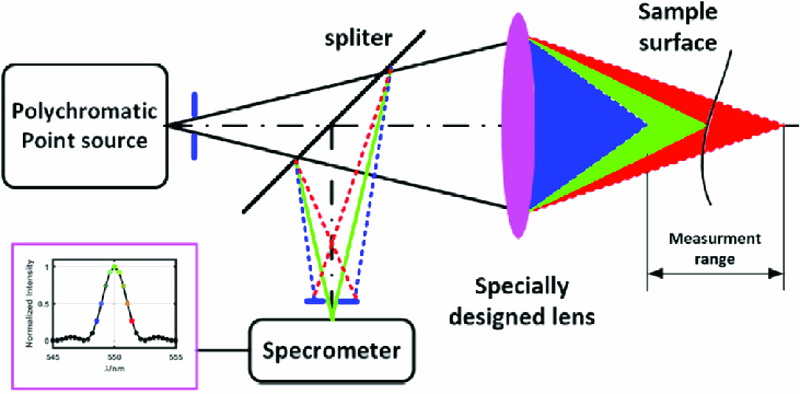 OK, looks like people are checking in now, so let's kick things off. Welcome to the Hack Chat, I'm Dan and I'll be moderating today along with Dusan. Today we're excited to welcome Zachary Tong to the Hack Chat -- you've probably seen some of his cool stuff on the Breaking Taps YT channel. Today, we're going to focus on microscopy, though. See what I did there?
OK, looks like people are checking in now, so let's kick things off. Welcome to the Hack Chat, I'm Dan and I'll be moderating today along with Dusan. Today we're excited to welcome Zachary Tong to the Hack Chat -- you've probably seen some of his cool stuff on the Breaking Taps YT channel. Today, we're going to focus on microscopy, though. See what I did there?
 Hello and welcome!
Hello and welcome!
 I'm not sure I've seen Zach log in yet, though. Are you out there yet, Zach?
I'm not sure I've seen Zach log in yet, though. Are you out there yet, Zach?

 Oh, that's right -- forgot about the @polyfractal thing. Sorry!
Oh, that's right -- forgot about the @polyfractal thing. Sorry!
 I looked at the laser microscopy video, it is amazing. You showen how easy it is to make.. still have you considered moving a prism or galvo to move the laser bundel?
I looked at the laser microscopy video, it is amazing. You showen how easy it is to make.. still have you considered moving a prism or galvo to move the laser bundel?

 Can you get us started with a little about your background?
Can you get us started with a little about your background?

So my background is actually in biology, which might be a surprise for folks that have seen some of my videos. Or maybe not, considering my poor engineering/EE skills hah. I have a degree in cell bio and worked in a wet lab for a number of years (culturing kidney and primary hippocampal neurons, running assays, etc). However for the last 10 or so years I've been in software. Most of that time working on the analytics functionality of a search engine called Elasticsearch.
Anyhow, I started my YT channel when I picked up metalworking, and it's slowly morphed into material science and microfab stuff. As my projects have gotten "smaller" over time, I keep finding myself needing (or wanting) new ways to measure/quantify the projects. Which has led to a proliferation of microscopes in my shop :)
To date, I have a few optical microscopes, a DIY laser confocal, a DIY "macro" atomic force microscope, a real AFM and a raman spectrometer. Contemplating building a chromatic confocal next, or maybe a white light interferometer. Definitely enjoy building instruments, even if they don't end up quite as useful as the real commercial ones :)

![]() Are you planning on realeasing the code for your LSM?
Are you planning on realeasing the code for your LSM?

 A couple of links for reference, in case you haven't seen them:
A couple of links for reference, in case you haven't seen them:

https://hackaday.com/2021/04/26/3d-printed-laser-scanning-confocal-microscope-measures-microns/
3D-Printed Laser Scanning Confocal Microscope Measures Microns
When one thinks about microscopy, it seems to be mostly qualitative. Looking at a slide teeming with bacteria or protozoans is less about making measurements and more about recognizing features and describing their appearance. Not all microscopes are created equal, though, with some being far more optimized for making fine measurements of the microscopic realm.

https://hackaday.com/2021/06/12/macro-model-makes-atomic-force-microscopy-easier-to-understand/
Macro Model Makes Atomic Force Microscopy Easier To Understand
For anyone that's fiddled around with a magnifying glass, it's pretty easy to understand how optical microscopes work. And as microscopes are just an elaboration on a simple hand lens, so too are electron microscopes an elaboration on the optical kind, with electrons and magnets standing in for light and lenses.
 @polyfractal you should check out my video, I have a laser scanner with a fpga . Actually after seeing your video I thought of adding reading
@polyfractal you should check out my video, I have a laser scanner with a fpga . Actually after seeing your video I thought of adding reading



![]() Ist it possible with the your icspi afm to take force curves to get local material parameters?
Ist it possible with the your icspi afm to take force curves to get local material parameters?
 That's really cool. What special about the "specially designed lens" - designed to maximize chromatic aberration, I suppose?
That's really cool. What special about the "specially designed lens" - designed to maximize chromatic aberration, I suppose?
![]() Doesn't the chromatic confocal get influenced by the color of the sample?
Doesn't the chromatic confocal get influenced by the color of the sample?
 @polyfractal project is here https://hackaday.io/project/21933-open-hardware-fast-high-resolution-laser ... you should also check out the startup spiden.com they have an interest in your work and use light + ai to detect biomarkers, anyhow enough promotion 😉
@polyfractal project is here https://hackaday.io/project/21933-open-hardware-fast-high-resolution-laser ... you should also check out the startup spiden.com they have an interest in your work and use light + ai to detect biomarkers, anyhow enough promotion 😉

![]() @Dan Maloney The lense is needed so that the diffrent Wavelengths have diffrent focal distances
@Dan Maloney The lense is needed so that the diffrent Wavelengths have diffrent focal distances



![]() Ok, so the error correction is mostly on the software side with a bit of pre-filtering.
Ok, so the error correction is mostly on the software side with a bit of pre-filtering.
 I'm surprised you haven't delved into a self hacked SEM.
I'm surprised you haven't delved into a self hacked SEM.

![]() Random thought. Confocal microscope, using two-photon process for curing photoresists with resolution quite below the diffraction limit.
Random thought. Confocal microscope, using two-photon process for curing photoresists with resolution quite below the diffraction limit.
 Read that as *curling*, was confused
Read that as *curling*, was confused
![]() if the resist is curling, your adhesion to substrate sucks. :P
if the resist is curling, your adhesion to substrate sucks. :P


![]() The danger of HV depends more on the deliverable current (and energy). You can get dozens to maybe hundreds kV from static spark. It's the current that kills, the voltage only pushes it through.
The danger of HV depends more on the deliverable current (and energy). You can get dozens to maybe hundreds kV from static spark. It's the current that kills, the voltage only pushes it through.
 And then to be even more specific, if you have a high voltage across your body, you will also have a high current going through it too. V=IR is always always always true.
And then to be even more specific, if you have a high voltage across your body, you will also have a high current going through it too. V=IR is always always always true.
 @polyfractal , have you ever considered laser induced forward transfer? would be curious to see a simple setup
@polyfractal , have you ever considered laser induced forward transfer? would be curious to see a simple setup

 Also I just wanted to comment that it's cool you have a bio background before this. I started in biochemistry and the transition to engineering was interesting to say the least.
Also I just wanted to comment that it's cool you have a bio background before this. I started in biochemistry and the transition to engineering was interesting to say the least.
![]() Depends on how "hard" the power supply is. If it is weak, the voltage quickly drops.
Depends on how "hard" the power supply is. If it is weak, the voltage quickly drops.
 Read somewhere of a hacked SEM with a reworked gun from a old CRT for the beam.
Read somewhere of a hacked SEM with a reworked gun from a old CRT for the beam.
![]() For HV, go look up Plasma Channel. He might help you
For HV, go look up Plasma Channel. He might help you
 @polyfractal how long did it take you to make the laser confocal video (excluding construction) ?
@polyfractal how long did it take you to make the laser confocal video (excluding construction) ?

https://hackaday.io/event/174398-into-the-plasmaverse-hack-chat
Into the Plasmaverse Hack Chat
Jay Bowles will host the Hack Chat on Wednesday, September 23, 2020 at noon Pacific Time. Time zones got you down? Here's a handy time converter! Most kids catch on to the fact that matter can exist in three states -- solid, liquid, and gas -- pretty early in life, usually after playing in the snow a few times.
![]() Anybody here knowledgeable about DIC (differential interference contrast), especiallyin the reflected light variant? how does the choics of a DIC prism depend on the lens?
Anybody here knowledgeable about DIC (differential interference contrast), especiallyin the reflected light variant? how does the choics of a DIC prism depend on the lens?
 We had Jay on last year!
We had Jay on last year!
![]() @Dan Maloney , yup, that was a fun one :P
@Dan Maloney , yup, that was a fun one :P




 @polyfractal yes
@polyfractal yes
![]() I did some experiments with control of a CO2 laser. Notoriously hard to get low power from the tube, the discharge won't light/stay at low currents. but the power supply responds *fast* so the amount of energy delivered can be easily controlled by the pulse time, which is easy to generate with a spare timer on the arduino with just a bit of patch of Marlin.
I did some experiments with control of a CO2 laser. Notoriously hard to get low power from the tube, the discharge won't light/stay at low currents. but the power supply responds *fast* so the amount of energy delivered can be easily controlled by the pulse time, which is easy to generate with a spare timer on the arduino with just a bit of patch of Marlin.
![]() @polyfractal What project would you recommend for a beginner who wants to dip his toes in diy microscopes?
@polyfractal What project would you recommend for a beginner who wants to dip his toes in diy microscopes?

 Uhm... So that's it? Just a bunch of people chatting?
Uhm... So that's it? Just a bunch of people chatting?
 That would be the case if I was ever in a "real" role, still goofing off in an academic setting :) I have considered being in software just because it's so in demand and it's accessible for work. Not sure if my Python skills are good enough for a "real" job though.
That would be the case if I was ever in a "real" role, still goofing off in an academic setting :) I have considered being in software just because it's so in demand and it's accessible for work. Not sure if my Python skills are good enough for a "real" job though.
@perisackhd I would recommend you start relatively macro, like with a USB microscope or RPI lens flipped backward. Or you can work with an existing project like openflexure.

 @polyfractal did you have a "big break" when it came to making videos, or did you have a steady clip of subscribers from the beginning?
@polyfractal did you have a "big break" when it came to making videos, or did you have a steady clip of subscribers from the beginning?

 @Birk -- that's why we call it a "Hack Chat"
@Birk -- that's why we call it a "Hack Chat"
![]() Open flexure seems like a great start to get into "optical" microscopy
Open flexure seems like a great start to get into "optical" microscopy
 Feel free to join in with questions, though
Feel free to join in with questions, though
 How about something like this: Fiber-optic confocal microscope using a MEMS scanner and miniature objective lens
How about something like this: Fiber-optic confocal microscope using a MEMS scanner and miniature objective lens
HJ Shin, MC Pierce, D Lee, H Ra, O Solgaard… - Optics …, 2007 - osapublishing.org

 @perlsackhd and not to gotcha @polyfractal but if it's non-infinity, it doesn't have to be *exactly* that distance away (something I worried about when I got into macro). If the lens is closer to your sensor the image will just be less magnified.
@perlsackhd and not to gotcha @polyfractal but if it's non-infinity, it doesn't have to be *exactly* that distance away (something I worried about when I got into macro). If the lens is closer to your sensor the image will just be less magnified.

 @polyfractal I indeed first saw you through your high speed chatter video. 5-6k is still really great to me too.
@polyfractal I indeed first saw you through your high speed chatter video. 5-6k is still really great to me too.
 Cough cough, Hackaday ;-)
Cough cough, Hackaday ;-)


https://hackaday.com/2020/01/16/analyzing-cnc-tool-chatter-with-audacity/
Analyzing CNC Tool Chatter With Audacity
When you're operating a machine that's powerful enough to tear a solid metal block to shards, it pays to be attentive to details. The angular momentum of the spindle of a modern CNC machine can be trouble if it gets unleashed the wrong way, which is why generations of machinists have developed an ear for the telltale sign of impending doom: chatter.


 Think that was the first time I had seen one of your vids, actually, so it probably was that mysterious YT algo push.
Think that was the first time I had seen one of your vids, actually, so it probably was that mysterious YT algo push.


![]() @polyfractal I too saw the chattering video first then long time nothing and after seeing the LSM video remembered the Chattering video
@polyfractal I too saw the chattering video first then long time nothing and after seeing the LSM video remembered the Chattering video
 What is a video that you worked really hard on, or just otherwise wish got a lot more attention?
What is a video that you worked really hard on, or just otherwise wish got a lot more attention?

![]() heyy
heyy
![]() i need help plss
i need help plss

More recently I did a video about sputter shadow masks, but included a Blade Runner trailer spoof and was too cutsey with the title/thumbnail which really penalized traffic. oh well :)

 Dan Maloney
Dan Maloney


Discussions
Become a Hackaday.io Member
Create an account to leave a comment. Already have an account? Log In.